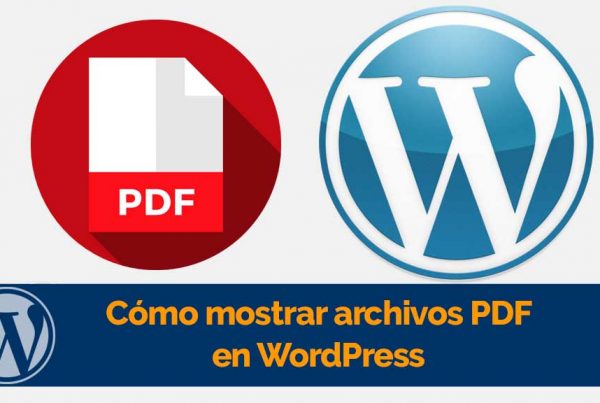WordPress existe desde hace años.
Todos conocemos la revolución masiva que trajo al mundo del blogging y el Web design.
La idea de democratizar la edición, con el concepto de Open Source, se convirtió en un gran éxito y cada vez más diseñadores se unieron a la revolución aportando sus propias ideas, conceptos y proyectos plenamente desarrollados para apoyar la noción.
Los partidarios del código abierto tienen la idea de que ha permitido a la gente no sólo estudiar el source code de un producto en particular, sino al mismo tiempo trabajar para mejorarlo estudiando y reportando sus depuraciones, sugiriendo mejoras y ofreciendo parches que pueden contribuir a solucionar el problema.
Los que se oponen a la idea, a parte de esto, piensan que el código abierto hace que un proyecto be más vulnerable a los ataques y a los hackers.
Many will even suggest that in the event of a failure, there is no one to take over the charges, so there is no warranty.
But if we compare the concerns, the disadvantage is slightly offset given the extent to which you can work in the project by customizing the current version to create a much more powerful version of it.
On being vulnerable to hackers, that can be fixed.
Debido a que de otra forma, WordPress nunca hubiera hecho que se convirtiera en una plataforma de publicación Web tan dinámica como lo es hoy en día.
Si usted al mismo tiempo es un fan de la licencia de código abierto de WordPress, que no se queda atrás cuando se trata de codificación y quiere usarla de forma definitiva, entonces WordPress tiene muchas alternativas para usted.
For starters, you can probably design a theme and submit it to the WordPress repository.
Submitting your first theme to the WordPress plugin repository
The WordPress plugin repository, wp-plugins.org was created with the idea of having a common set of tools for all WordPress users and a common workspace for all WordPress plugin and theme developers.
If it works for you, then go ahead and submit more. It feels good to see people using and loving a product that you have created with so much work and love.
The WordPress Repository
The Wp repository is the main reason why WordPress has made it so great.
Ha estado lleno de tantos recursos que cualquier persona y casi todo el mundo puede recoger para sus proyectos. Esto puede ser un plugin o un tema.
All the resources available in this repository are available for free.
Why submit your theme to the repository?
There are so many reasons why uploading your theme to the repository can be beneficial to your professional growth as a developer. Here are some of them.
- Exposition – Esta es probablemente la razón principal por la que querría enviar su tema al repositorio. Como novato, esta puede ser probablemente su mejor oportunidad para buscar exposición en la comunidad de WordPress.Al enviar su tema, lo pone a disposición de una base de usuarios tan grande que de forma automática obtiene una buena exposición, lo que podría incluso conducir a la adquisición de clientes y, a veces, al mismo tiempo a donaciones de PayPal.
- Build credibility - Having your theme in the official repository increases your credibility as a developer. At the same time, WordPress users tend to prefer to trust themes that are already part of the repository.
- Keep Statistics - By uploading your plugin, you can keep track of the number of times your theme has been downloaded. At the same time you can know the exact time it happened and by whom.
- Comments and Reviews - The WP Repository can allow your users to comment on your product. Based on their experience, they can give you feedback, report bugs found, and of course suggest improvements.
Submitting your theme to the WP repository
The WordPress theme repository It is the place where your theme lives.
Es básicamente como un gran mercado desde donde un Username puede venir y recogerlo para sus proyectos. Cientos de miles de desarrolladores de todo el mundo presentan su brillante trabajo aquí todos los días.
It might sound like a fancy thing to do.
But the real challenge comes when you realize that listing your theme in its repository is a difficult task.
There are several preconditions and requirements that must be met before obtaining approval for submission.
In this section we are going to discuss how to upload a theme to the WordPress.org theme repository along with the various criteria required for your theme to be approved by the WordPress Community.
1. Guidelines to follow during the development of any topic of the work package
Although it is an open source project, WordPress hates to compromise on the rules they have set for their contributors.
This way, don't try to challenge their guidelines if you don't want to face rejection.
They do this just to make sure that only high-quality and secure themes are part of their repository.
I would recommend that you review your Themes Requirements official page before starting the shipping process.
I am going to list some of the standards that are mentioned as guidelines:
- El tema no debe tener errores de PHP or JavaScript.
- Validate the input data before entering it into the database.
- It must have a valid DOCTYPE declaration and include the language_attributes
- PHP classes and functions must be prefixed.
- You must modify or completely erase the hooks that are not presentable.
- Link su JavaScript y CSS como un archivo externo y no debe ser incluido en las cabeceras.
- You should add options for extensive, offline documentation.
Aside from the coding rules mentioned previously, there are several other guidelines that a developer should follow:
- The theme must be compatible with the GPL, GPL2 or GPL license
- All text strings in your theme must be translatable
- You should use the words - WordPress and Theme as part of the theme name
- The word 'WordPress' can never be misspelled and must always be capitalized'W'y uppercase'P'
This list of guidelines are just a few of the many other requirements that WordPress has listed for you.
2. Preparing your development environment
Now that you know the guidelines, it's time to develop and test your theme. To do this, you will need a set of tools that allow you to safely test your theme before launching it on the market.
Here are the steps:
- Descargue una aplicación de server Web:
Como sabes que WordPress está basado en PHP, necesitarás un software de servidor web que esté instalado localmente en tu sistema. Hay muchas opciones entre las que puede elegir. Algunos de ellos son XAMPP, WAMP etc MAMP.
At the same time, at the same time you will need a text editor to write your code, the most popular is Notepad, which is available on your system.
By enabling the WordPress debugging feature, you enable WordPress to display any errors caused by your code.
To enable it, open the wp-config.php file of your WordPress installation. You just need to make a few small changes here.
Change: define ('WP_DEBUG', false); To:
define ('WP_DEBUG ', true);
- Import test data from subject units:
In this step, you will need to import the subject unit test data. Thematic unit test data works by filling your local WordPress installation with dummy test data.
Puede utilizarlo para comprobar cómo se verá el tema en la pantalla de su client.
Para promover aún más su development environment, al mismo tiempo puede instalar los siguientes plugins. Esto no es un requisito absoluto. Puedes omitirlo si deseas.
- Debug bar - this will provide a central debugging location, adding an admin bar.
- Developer - to take full advantage of the environment and ensure code quality.
- Theme Check- This plugin ensures that your theme meets the latest standards and requirements.
- Query Monitor-East will debug your queries to the database.
3. Check your theme
By now, your topic should be ready to go public. But before trying your luck, you should do the following:
- Comprueba la compatibilidad de tu tema con el browser y el dispositivo. Puede hacerlo probándolo en diferentes browsers y en diferentes dispositivos.
- Review the code for your theme. For this you can use the Theme Check plugin.
- Compruebe y elimine todos los errores de su HTML, CSS y JavaScript.
- Review the guidelines and recommendations one more time, just to make sure nothing has been missed.
Once all of this is done, your theme is ready for upload.
4. Upload your theme
- To upload your theme, log in to your WordPress account
- Go to https://wordpress.org/themes/upload/and y cargue el archivo.zip de su tema
- While your theme is loading, you may have to go through a series of checks to test it. Do not interrupt the process and sit down patiently.
5. Review of topics
WordPress volunteers will review your theme once you submit it.
Therefore, depending on the characteristics and its general quality, it will be approved or rejected by the team.
I cannot say for sure how long it will take you to know the result.
But the approval process can take months.
You can receive an email if there is a problem with the topic of your work package. Try to fix it as quickly as possible and resubmit the issue.
If everything works fine, it shouldn't take long to get approved.
6. Subject Approval
You can't expect to see your song live immediately as it is approved by the team.
Once the first step has been safely taken, another series of tests awaits clearance under the supervision of a member of the management team or a key reviewer.
The link below enables you to check the approval queue for the current topic.
Final Review: Approved Topics Not Living Yet.
Although it seems like an easy process, getting your theme to the WordPress repository is indeed a difficult task.
It takes a lot of time aside from the effort you put in to see how it gets going. You will receive an email confirming the approval once all the steps have been completed.
conclusion
If you are a developer, then contributing an elegant WP theme to the WordPress repository can open up a sea of opportunities for you.
Not only does it build your own credibility as a developer, but it also enables you to make a great contribution to the online community.
It may take several months, but trust me, this wait is worth noting if your work package topic reaches the repository.




